
Best Earth Images of the Week - May 25, 2012
Beauty in a Storm
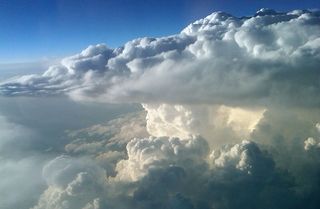
Flying high over the ground in a plane, a thunderstorm's anvil cloud might be the last thing you want to see, but it's exactly what a group of scientists conducting an airborne mission were looking for.
The Deep Convective Clouds and Chemistry (DC3) experiment is investigating how large thunderstorms affect the chemistry of the atmosphere by flying right into them.
[Full Story: Amazing Anvil Cloud Photo Snapped from Plane]
Historic Find
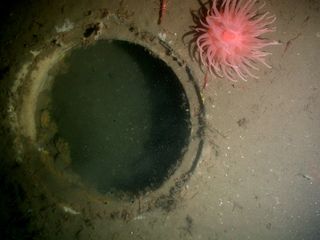
The shipwreck of a 19th century schooner that hauled granite for the construction of burgeoning cities along the U.S. East Coast is getting new protection as a historic relic at Stellwagen Bank National Marine Sanctuary in Massachusetts Bay.
Built in Camden, Maine, the 79-foot, two-masted cargo schooner Lamartine was launched in 1848 and sailed along the Eastern Seaboard for 45 years. While hauling granite sewer heads from Stonington, Maine, to New York City on May 17, 1893, the Lamartine encountered a storm off Cape Ann, Mass. Heavy seas caused the schooner's cargo to shift, capsizing the vessel.
[Full Story: Shipwreck of 19th Century Schooner Listed as Historic Relic]
Another Stinky Bloom
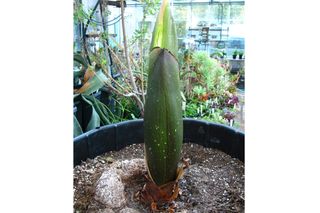
A so-called "corpse flower" is getting set to make a stink just two years after it initially bloomed, Western Illinois University (WIU) greenhouse announced today.
The corpse flower is the nickname for the plant technically known as an Indonesian titan arum (Amorphophallus titanum) plant. Native to the equatorial rain forests of central Sumatra in western Indonesia, these flowers are as rare as they are malodorous. They grow in the wild only in the rain forests of Sumatra and rarely bloom in cultivation.
[Full Story: Stinky Corpse Flower Gets Ready for Second Bloom]
Unique Shadow
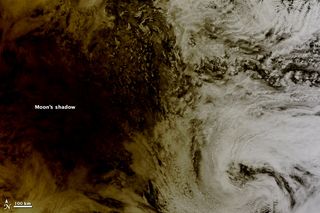
While thousands of skywatchers were looking up on Sunday (May 20) at the annular lunar eclipse that was visible from Asia to the western United States, NASA's Terra satellite was looking down and took a spectacular image of the moon's shadow over the Pacific Ocean.
Annular eclipses occur when the moon is at a point in its orbit that is too far from Earth to completely block the sun's disk. The result is a ringlike, or annulus, effect.
[Full Story: Solar Eclipse's Shadow Caught in Spectacular Satellite Photo]
Huricane Season Comes Early

A NASA satellite snapped a picture of the cyclone that brought an early start to the 2012 Atlantic hurricane season, Tropical Storm Alberto, not long after the storm formed off the coast of South Carolina.
While hurricane season doesn't officially begin until June 1, "we've had a storm form outside the season it's not a surprise," Dennis Feltgen, a spokesman for the National Hurricane Center, told OurAmazingPlanet.
[Full Story: Early Tropical Storm Alberto Spied by NASA Satellite]
Beating the Odds

After a rocky start in the world, two three-week-old cheetah cubs were transferred to the Smithsonian National Zoo last week where they are being hand-raised and will debut to the public later this summer.
Five-year-old cheetah and first-time mom Ally gave birth to the first cub, a male, on April 23 at the Smithsonian Conservation Biology Institute in Front Royal, Va. Ally abandoned the cub instead of nursing and cleaning it, a common occurrence for first time cheetah moms under the care of humans, according to the zoo.
[Full Story: Cheetah Cubs Survive Difficult Birth]
Olympic Views
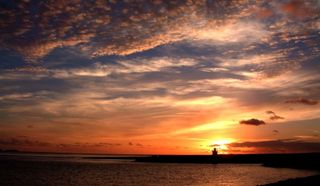
The 2012 London Olympics torch run is winding its way around the United Kingdom. This week it makes its way through the Welsh contryside.
On May 26, the torch will leave Cardiff and head toward Swansea Castle and Burry Port. This small town is where Amelia Earhart landed after crossing the Atlantic Ocean in 1928.
[Full Story: 2012 London Olympic Torch Route: Week 2 Sights]
Sign up for the Live Science daily newsletter now
Get the world’s most fascinating discoveries delivered straight to your inbox.
World's Largest, and Cutest, Rodent

Two little bundles of joy born recently at the Belfast Zoo actually belong to the world's largest rodent species.
Twin capybara babies, named Gus and Jacques, were born to parents Charlie and Lola on April 3.
"It's definitely an exciting time and I am sure that zoo visitors will enjoy visiting our new arrivals, Gus and Jacques," said zoo manager Mark Challis.
[Full Story: Belfast Zoo Welcomes Baby Capybaras]
Devastating Anniversary

This week marks the anniversary of the largest earthquake ever recorded a magnitude-9.5 earthquake that ripped along the coast of southern Chile on May 22, 1960.
The colossal quake and the powerful tsunami that followed killed more than 1,400 people and left 2 million homeless in Chile. And its devastation reached far beyond South America.
The tsunami swept across the Pacific Ocean, wreaking havoc in Hawaii, the Philippines and Japan; a day after the earthquake, walls of water up to 18 feet (5.5 meters) high rushed ashore at Honshu, Japan's main island, destroying 1,600 homes and killing 138 people.
[Full Story: Earthquake Magnitude: Just How Big Was the Biggest Earthquake?]










